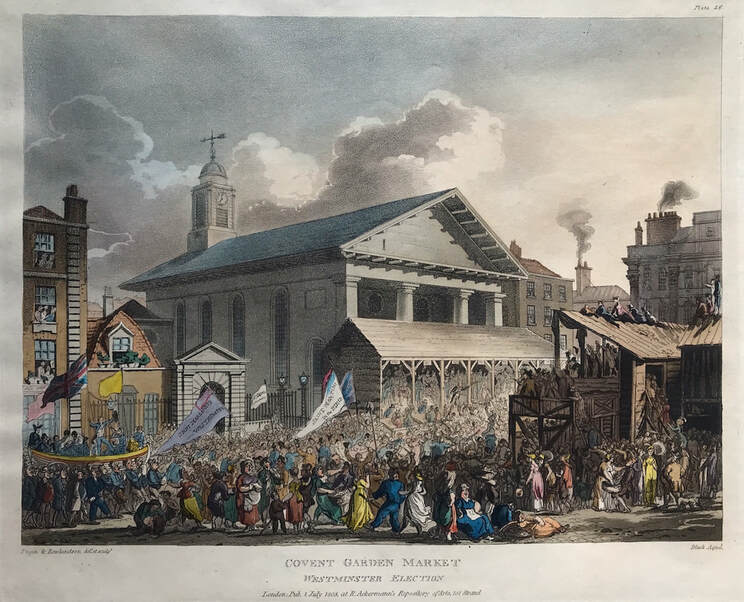|
Topography is the study of places such as towns, districts, parts of the countryside, buildings and their settings. Before photography, engravings and etchings were the only means by which people could learn about the appearance of the scenery, great houses and ancient monuments of the land. The years between 1730 and 1870 were the great age of the topographical print. Many places have been captured at a moment in time by means of a print. Maybe you have a favourite from this period. Such prints were the reproduction of a design incised into a metal plate by one of a number of methods, or engraved on a block of wood or drawn on a slab of stone or zinc. What are you captured by? Some of these plates are now rare and expensive collectors’ items. Others can still be bought for a few pounds. What often fascinates us is the fact that the place is captured at that moment in time, it sometimes holds a special significance to us or is associated with some story that has captured our imagination. Sometimes it’s a combination of the place, scenery and the method that was used to reproduce the image that holds a special attraction. Aquatint is a complicated process which I am not going to delve into here. Produced in black and white or coloured, the later were finish with hand colouring. The first English prints in aquatint were made by Peter Burdett in or about 1771 after paintings by John Mortimer and Joseph Wright. Paul Sandby was the first Englishman to use it extensively. Within a few years the great productions of the major publishers, the Boydells, Ackerman and Bulmer began to appear. Major Colour Publications One of these was the Boydell’s History of the River Thames, containing seventy-six plates aquatinted by Joseph Constantine Stadler after the watercolours of Joseph Farington and first published in 1794. Garrick's Villa c1793 by Farington, Stadler col. Volume I, Plate 45 From Joseph Farington's 'History of the River Thames', 1794 Click for more. Many of the most important collections of aquatints were published by Rudolph Ackermann, who opened his print shop in the Strand in 1795 after emigrating from Germany and marrying an Englishwoman. His shop - the Repository of Arts - eventually replaced Boydells’ establishment as the focal point of the print trade. Aquatint became his speciality and he employed a large number of colourists to finish plates, most of which were printed in only one or two basic colours. Covent Garden Market, Westminster Election c1808 Rowlandson & Pugin from Ackermann's Microcosm of London. Click for More. Ackermann attracted major artists, the best known are Thomas Rowlandson and Augustus Pugin. Pugin did the buildings and Rowlandson the figures for some of Ackermann’s most successful undertakings, including the three volumes The Microcosm of London collected in 1810 from a succession of monthly parts.
What is Your Favourite Place? I’m extremely fortunate to live very close to the River Thames and London. As a lover of aquatint the images shown here are places I know well and the method used to produce them fascinates me. Do you have a favourite place in England or somewhere else in the world? Do you have old prints of that favourite place? I’d love it if you could share by commenting below…… |
LEARN ABOUT MAPS Where to Start? The Paper Earliest Maps Whats on the Paper? Rectum & Recto Marketing Devices Why Changing Faces? What is Ornamentation? Why all those lines? The Embellishment Story Illogical Prices Explained A Reference Library CLICK THE BOOK
Get the FREE Guide!
COLLECTING MAPS
Size Matters! Celestial Maps Strip Road Maps Sea Charts On the River of Life Projections The Sea Monsters Thematic Maps Town Plans Buy with Confidence. . .
More Top Tips for the Novice. Click the book to find out more . . .
COLLECTING PRINTS
Views of River Thames
Views of London Shipping & Craft Meet the Fairies Maritime Naval Military Battles Botanical Historic Churches Historic Views of Rome Archives
May 2024
|




